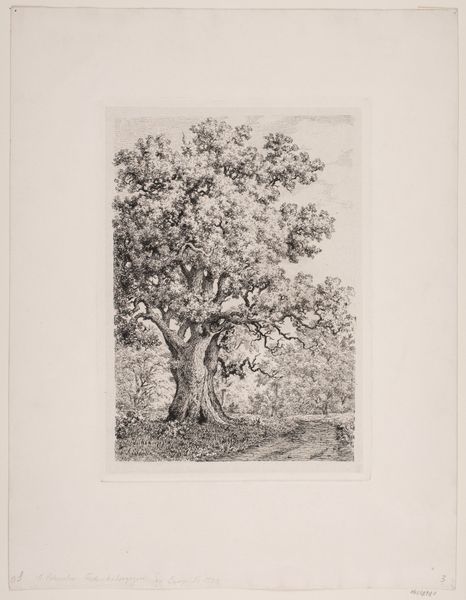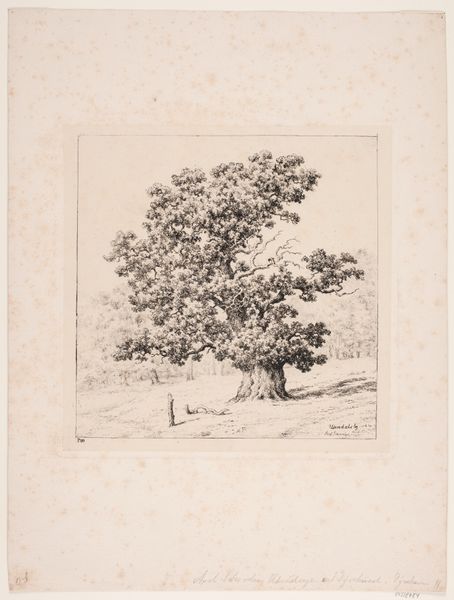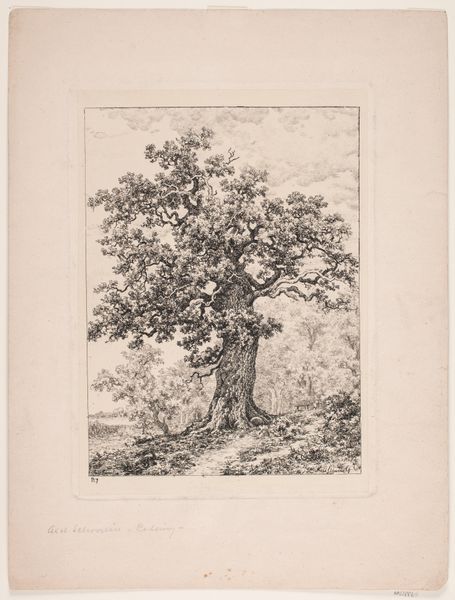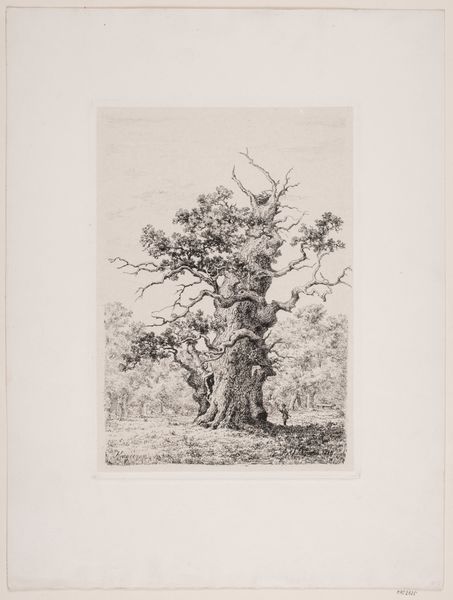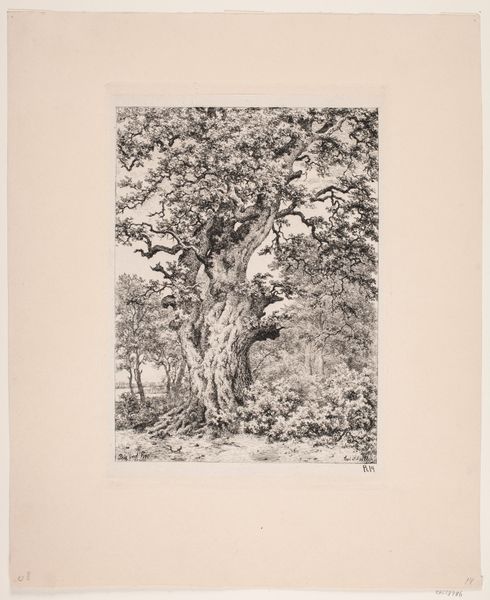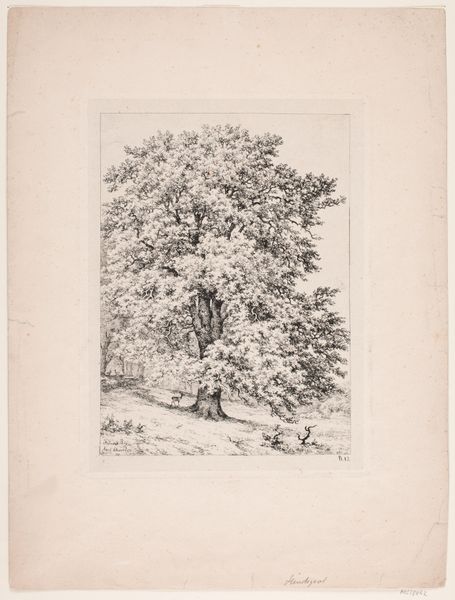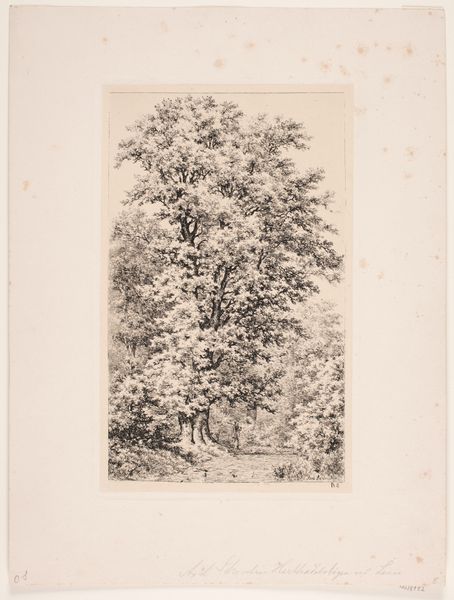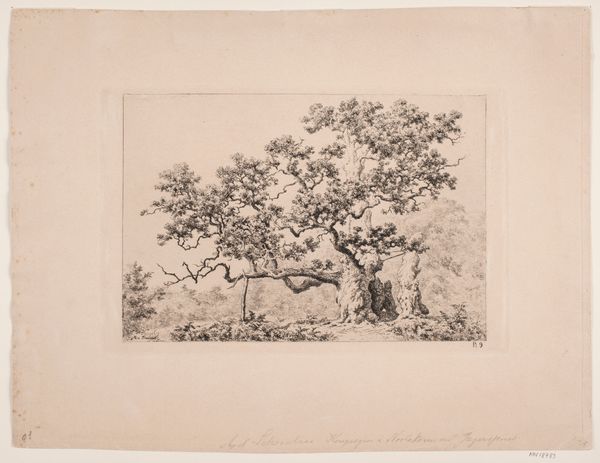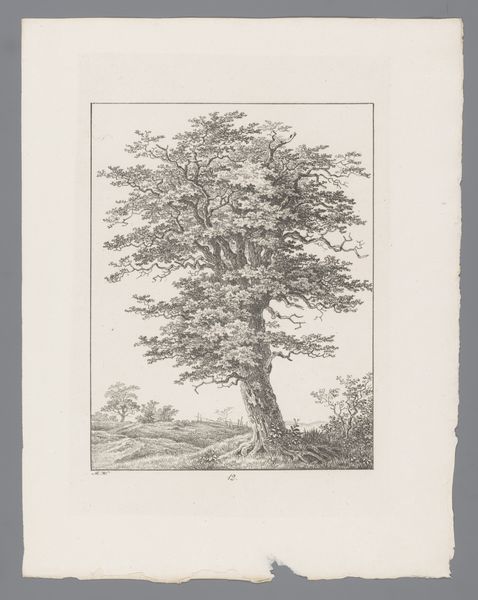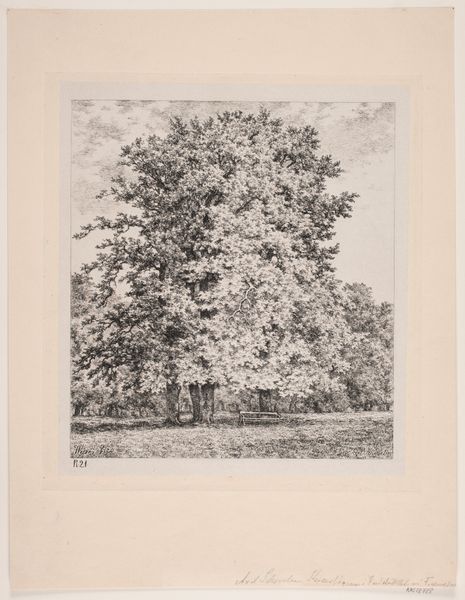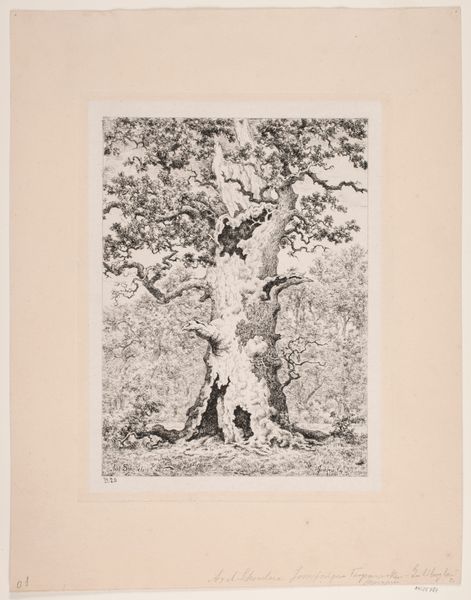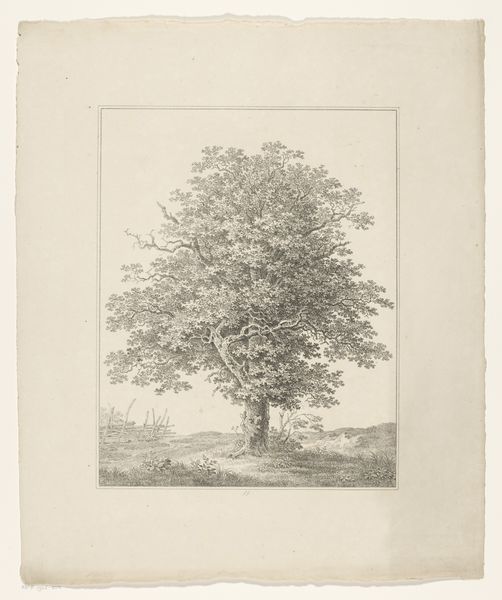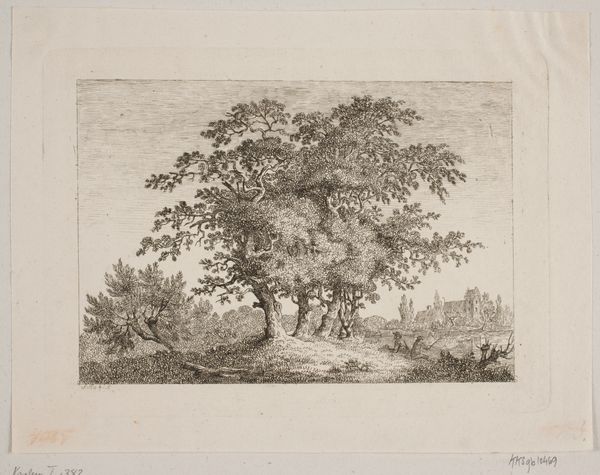
print, etching, engraving
# print
#
etching
#
landscape
#
etching
#
northern-renaissance
#
engraving
#
realism
Dimensions: 250 mm (height) x 175 mm (width) (plademaal)
Curator: Welcome. We're standing before Axel Schovelin's "Adam. Christianssæde, Lolland" from 1887, a print using etching and engraving techniques. Editor: My first impression is a somber stillness, a profound connection with nature's enduring strength. It feels deeply rooted in the land. Curator: Indeed. Note how Schovelin uses dense, intricate lines to build up the textures of the leaves and the rough bark of the massive oak tree. It’s a masterclass in tonal variation within a limited palette. Editor: That oak becomes a powerful symbol here, doesn't it? For centuries, the oak has signified resilience, longevity, and even wisdom in many cultures. Its solitary presence imbues this landscape with a timeless quality. The lone figure in the distance appears almost insignificant, underscoring nature's grandeur. Curator: The strategic placement of that figure establishes a proportional relationship, effectively scaling the immensity of the oak within the composition, a deliberate choice to play with depth and perspective. Consider the tree's centrality; it anchors the entire image, exerting an influence that subtly organizes everything around it. Editor: Exactly. And the choice of "Adam" in the title – perhaps referencing the biblical Adam – layers another level of meaning. It may symbolize humanity's relationship to nature, suggesting a longing for a primordial state of harmony, now potentially lost. The scene speaks of the Danish countryside, but also something deeper, maybe of a return to our origins. Curator: Schovelin manipulates light and shadow to evoke a certain mood, emphasizing texture to render three dimensions into a print. It is a testament to the artist’s skill in handling graphic media and an appreciation of structure. Editor: Ultimately, this image speaks of nature's enduring power. It portrays the lone oak, but moreover is also an affirmation of life's continuities. Curator: A perfect way to close. Let's move on to explore other ways in which printmaking shaped the Danish art scene in this period.
Comments
No comments
Be the first to comment and join the conversation on the ultimate creative platform.
